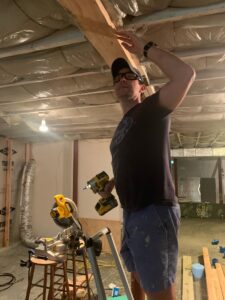
Permanent Injuries Require THREE Findings
In order to receive permanency benefits, an injured worker in Virginia must have written evidence supporting the claim. Recently, Doug Landau and the Worker’s Compensation team at ABRAMS LANDAU Ltd., ran into an unusual situation.

The injured worker had lost nearly all of the vision in his eye. There had been an explosion and this landscaping supervisor did nothave eye protection. After his treatment concluded, his doctor told him that he would not have vision in his left eye. Lawyer Landau requested that the doctor put into writing that the condition was permanent, give it a numerical rating, pursuant to the Workers Compensation Act, and relate it to the on the job injury. The doctor indicated that he would write that it was a permanent condition, but he was not able to give a numerical rating.
The ABRAMS LANDAU team had to pay for another one of the treating doctors for this client to give a numerical rating as required under the Virginia Workers Compensation law. Even where the injured worker has lost an eye, leg or hand, such that a logical person would think that the rating is 100%, Landau has been told in court, by a judge who he knows well, that unless there’s a numerical rating from a competent physician, no permanency benefits could be granted!

So in this case, there was the finding that the injured worker was at “maximum medical improvement” (MMI) from one doctor, and then another treating doctor found that there was a 100% loss to the visual acuity in the injured eye. Both doctors did say that the loss of vision was as a result of the on the job injury. However, this case drives home the fact that you have to get “all your ducks in order” and have written proof that satisfies the requirements of the Virginia Workers Compensation law. You cannot just waltz to court, show an injury that has resulted in loss of a body part, and expect the judge to award monetary benefits.
In another case, the ABRAMS LANDAU team was under the impression that a client had reached “maximum medical improvement” after seven years from the date of the original injury. However, the orthopedic specialist disagreed because the patient was about to re-start physical therapy. The doctor stated that if the patient was in physical therapy for something more than just palliative care, then there could be improvement, and a finding of “MMI” was premature. The problem in the case was that the authorized treating doctor was a pain management specialist, and like certain other specialties (i.e. neurologists, chiropractors and anesthesiologists), he was not able to give a permanency rating. In cases where the authorized treating doctor is unable to give a numerical rating, the Abrams Landau team will often advance costs and invest in a permanent partial disability (PPD) rating appointment and evaluation in order to advance the injured worker’s case towards an award for those benefits.
If you, or someone you know has any questions, please do not hesitate to contact us at 703–796–9055, or email frontdesk@landaulawshop.com.
